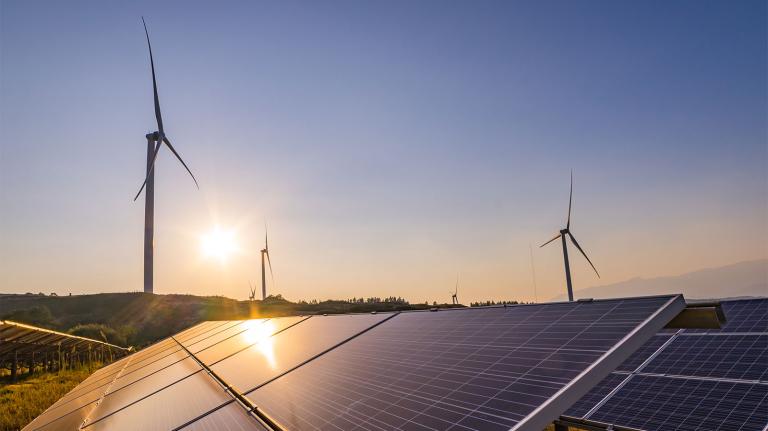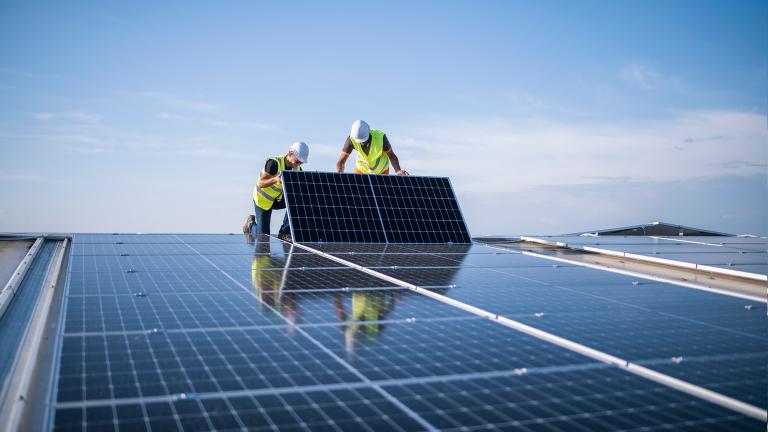Where does your smartphone come from? That question doesn’t have an easy answer. Chances are good that the device was assembled in a factory in China, but the materials that went into it likely came from all over the world. The copper wiring from Indonesia, the cobalt in its rechargeable battery from the Democratic Republic of Congo, and the iron in its speakers and microphone from the Amazon.
The combined effort to extract these materials — and the many others required to turn them into a smartphone — takes a heavy toll on people and on the environment.
To start with, there’s the carbon footprint: Four-fifths of the carbon emissions generated by a new iPhone come not from international shipping but from mining and manufacturing. Then there’s the rampant ecosystem destruction: Mining for gold — used for connectors and wires in electronic devices — is a major cause of deforestation in the Amazon, for example, while tin mining off the coast of Indonesia is responsible for destroying coral reefs.
The human rights abuses associated with mining for smartphone materials are just as alarming. To take just one example, much of the cobalt mining in the Democratic Republic of Congo is performed by women and children operating in toxic and potentially lethal environments. Neither the mining companies nor the electronics companies are held accountable for failing to address the inhumane practices they rely on.
The e-waste epidemic
The environmental and human impacts of electronic devices don’t end when they reach consumers. Most of us exchange our smartphones and laptops for new ones every few years. The disposal of these and other electronic devices generates an alarming amount of trash, or e-waste, as it’s called. In 2019 alone, we generated 53.6 million metric tons of e-waste globally, a figure that is expected to hit nearly 75 million by 2030.
Some organizations and individuals take care to recycle their used electronic devices. Traditionally, however, this has led to many devices being shipped to developing countries, where they are often stripped of valuable metals in unsafe and unregulated environments.
When a large business needs to dispose of a batch of used devices, it typically partners with an Information Technology Asset Disposition (ITAD) company, which is able to take advantage of the efficiency of scale by providing on-site pickup and decommissioning. Individual consumers, however, have long lacked an easy, safe, and transparent way to dispose of their old smartphones, laptops, and tablets. As a result, many of these devices end up either in the landfill or tucked away in drawers, collecting dust.
A new model
This was the situation that Will Cohen stepped into when his private equity group bought an ITAD company called HiTech Assets in 2016. Cohen, who came from a consulting background and was relatively unfamiliar with the tech disposal landscape, wasn’t impressed with what he saw.
“There was a real lack of proactive sustainability from companies in our space,” he says. “Equipment that could have been repaired and repurposed was instead recycled, because that’s what was cheaper. But recycling ended up adding more waste to the waste stream. My thought was: ‘What if we prevented waste in the first place?’”
To that end, Cohen led the transformation of HiTech Assets into CircleIT, with a new commitment to creating a circular economy for tech products. CircleIT started by making it easy for individual consumers to have their used devices repurposed. All they have to do is enter basic information about their device on the CircleIT website. Then they receive a shipping code, which they bring along with their device to a FedEx store. For a $12 flat fee, FedEx ships the item to CircleIT’s processing facility in Oklahoma City, OK, where its data is securely wiped.
Finally, CircleIT repurposes the device, giving it a second life in one of many potential contexts. For example, many of CircleIT’s used laptops are refurbished and donated to students who can’t afford computers. “I live in Baltimore, where 30 percent of inner-city students don’t have access to the internet,” Cohen says. “I wanted CircleIT to address this sort of imbalance.”
Meanwhile, consumers get to see exactly how their devices are being reused. Within 30 days of receiving the device, CircleIT issues an e-impact report detailing what has happened to it and how much waste has been averted thanks to its repurposing.
Helping companies achieve their environmental goals
CircleIT’s new model saw immediate success. In 2020, the company processed 569,616 devices that otherwise may have been landfilled or improperly recycled, avoiding 15,210 tons of greenhouse gas emissions related to the manufacturing of new devices and components. Its programs also helped keep the equivalent of nearly 181,500 bricks worth of hazardous waste from reaching landfills, being improperly recycled, or incinerated.
As Cohen saw the success of this consumer-oriented program, he started to wonder why similar techniques couldn’t be scaled up. From that thought arose CircleIT’s Environmental, Social, and Governance (ESG) platform, which helps companies achieve ESG commitments through their disposal of outdated technology. Now CircleIT is actively looking for nonprofits and environmental groups in need of tech devices so CircleIT can partner to provide them.
Here’s one example the company currently has in the works: CircleIT plans to collect devices from companies looking to get rid of them, and give the devices (or contribute proceeds generated from their resale) to a partner organization who uses them to create acoustic soundwave modules used to detect unreported deforestation in rainforests around the world. Companies or individuals who contribute tech through this program are in line to receive a high ESG score, garnering higher levels of individual and institutional investment. This leads to more positive long-term outcomes for the environment — all at a minimal upfront cost.
“It shouldn’t cost people or businesses an arm and a leg to dispose of electronic devices,” Cohen says. “And it shouldn’t cost the Earth anything at all.”
CircleIT is a digital ITAD provider and B Corporation focused on secure data destruction and technology reuse to create beneficial customer, environmental and social outcomes. We make it easy for companies, including those with a growing remote workforce, to securely and sustainably dispose of and repurpose older laptops, desktops and other unused technology devices. We then quantify the positive environmental and social impacts of our services in a certified ESG report that our customers can apply towards their own ESG goals.





